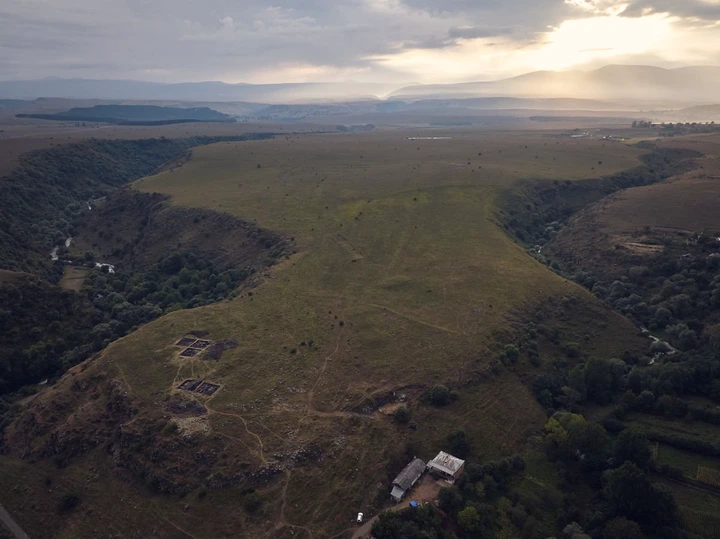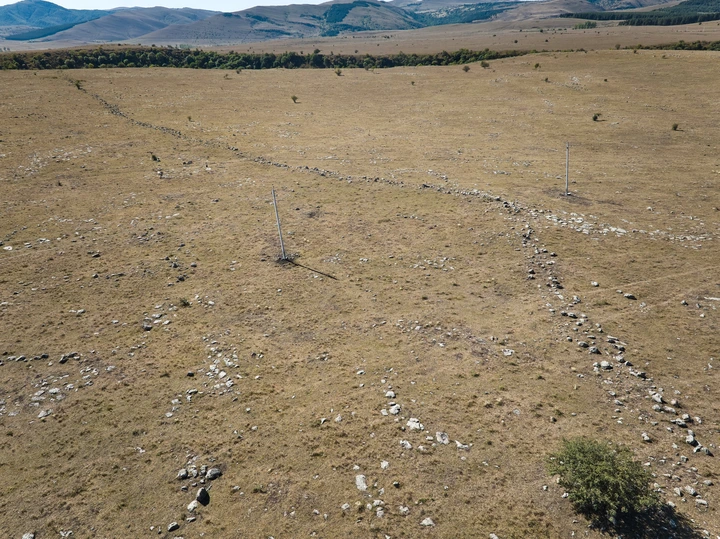The location was discovered to be 40 times larger than what was originally estimated.

View pictures in App save up to 80% data.
A massive Bronze-Age "mega fortress" has been uncovered in the Caucasus mountains, intriguing researchers who are trying to determine the role of this monumental prehistoric site at the junction of Europe and Asia. Dubbed Dmanisis Gora, this expansive fortified settlement overshadows all surrounding fortifications, but offers scant evidence regarding its inhabitants.
Dated to around 3,000 years ago, Dmanisis Gora is one of many fortress settlements that appeared in the South Caucasus between the second and first millennia BCE. Following initial excavations at the site in Georgia in 2018, archaeologists were surprised when they returned the following year to find the remains of a second set of fortification walls surrounding the inner fortress, thus massively expanding the size of the settlement.
Dmanisis Gora is so vast that it cannot be fully appreciated from the ground level; only drone photography can capture its true extent. In total, researchers captured 11,000 aerial images of the location, which they combined to create a comprehensive representation of the fortress.
“The results of this survey showed that the site was more than 40 times larger than originally thought, including a large outer settlement defended by a 1-kilometer-long [0.6-mile] fortification wall,” explained study author Dr Nathaniel Erb-Satullo in a statement. “These datasets enabled us to identify subtle topographic features and create accurate maps of all the fortification walls, graves, field systems, and other stone structures within the outer settlement.”
According to the researchers, the inner and outer fortification walls were “mutually dependent with respect to defence,” meaning they functioned as one system of protective barriers and neither wall could be considered impenetrable without the other. They were also both constructed in the same style, using rough boulders assembled without the use of mortar into walls roughly 2 meters (6.6 feet) thick.

View pictures in App save up to 80% data.
The results indicate that both fortifications were constructed concurrently, implying that the inner and outer settlements functioned as components of a single extensive site. "Should our hypothesis that the inner fortress and outer settlement were approximately contemporaneous be accurate, this settlement would rank among the largest recognized in the South Caucasus during the Late Bronze and Iron Age," the authors of the study state.
Interestingly, the vast outer settlement appears to lack significant archaeological finds, indicating that it may not have been home to a large population or was deserted soon after its construction. Both possibilities raise questions, especially considering the considerable effort invested in constructing the fortified walls.
Offering a possible explanation, researchers suggest that the fortress may have been used seasonally, potentially as a staging ground by pastoralists during the spring and autumn. Such a hypothesis would appear to justify the importance placed on this key site despite the fact that it lacked a large permanent population.
At this time, the specific purpose behind the site's establishment continues to be unclear. Nevertheless, Erb-Satullo mentions that "additional research will soon shed light on aspects like population density and intensity, livestock movements, and farming methods, among other factors."
The study is published in the journal Antiquity.